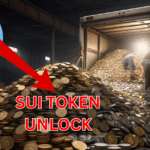Discover smart ways to avoid high Ethereum gas in 2025 with our expert guide. Learn how to reduce fees using Layer 2 solutions, strategic timing, and optimized tools for cost-effective transactions.
Ethereum remains one of the most popular blockchain networks in 2025, powering everything from decentralized finance (DeFi) applications to NFT marketplaces. However, with great power comes great cost—specifically, high gas fees. As a crypto trader or investor, understanding and implementing the best ways to reduce gas fees on Ethereum is essential for maximizing profitability and ensuring cost-efficient transactions.
In this guide, we’ll walk you through everything you need to know about how to avoid high Ethereum gas fees, with actionable tips for both beginners and seasoned users. Whether you’re conducting simple ETH transfers or interacting with complex smart contracts, this comprehensive guide will help you master optimizing gas fees on Ethereum in 2025. Without ETH for gas, even simple transactions stall — that’s why the fastest way to get ETH for gas is so important.
What Are Ethereum Gas Fees?
Ethereum gas fees are transaction costs users pay to perform operations on the Ethereum network. Gas fees compensate validators for processing transactions and executing smart contracts. Every transaction—from sending ETH to minting an NFT—requires computational resources, and gas fees measure that consumption to be paid for a successful on-chain transaction.
Why Are Gas Fees Important?
Gas fee is essential for the Ethereum ecosystem. They:
- Prevent spam on the network
- Prioritize urgent transactions
- Reward validators
- Support network security
Ignoring gas costs can lead to failed or delayed transactions, which can be costly for traders, especially during peak hours or during high network activity.
Why Do Gas Fees Fluctuate?
Ethereum gas price fluctuate due to:
- Network congestion: More users = higher fees
- Smart contract complexity: More complex operations cost more gas
- Gas wars: When multiple users compete to complete transactions quickly
- Market conditions: Bull markets often result in higher transaction volume and fees
How Are Gas Fees Calculated?
Ethereum uses a base fee model introduced in EIP-1559. The total fee = Base Fee + Priority Fee (Tip) multiplied by the Gas Limit.
- Base Fee: Automatically adjusted based on network demand
- Priority Fee: Incentive to prioritize your transaction
- Gas Limit: Max amount of gas you’re willing to spend
Key Components of Gas Fees
- Gwei: A denomination of ETH used for gas (1 ETH = 1 billion Gwei)
- Gas Limit: A cap on how much computational effort you’re willing to spend
- Base Fee and Tip: The dynamic pricing mechanism
The Role of Ethereum 2.0 in Gas Fees
With the Ethereum 2.0 upgrade and transition to Proof-of-Stake (PoS), scalability has improved. Ethereum now relies on Layer 2 solutions like rollups to reduce mainnet congestion. While gas fees are still present, Ethereum 2.0 has:
- Reduced the frequency of high-fee spikes
- Enabled more efficient transaction batching
- Opened the door for lower-cost alternatives like Optimism and Arbitrum
Understanding Gas Refunds and Optimizing Contracts
Advanced users and developers can minimize fees by:
- Using optimized smart contract code
- Leveraging gas refund mechanisms where applicable
- Cleaning up storage (SSTORE and SELFDESTRUCT refunds)
Timing and Tools for Optimizing Gas Fees on Ethereum
Monitor Gas Prices Stay informed about real-time gas prices using:
- Etherscan Gas Tracker
- Blocknative ETH Gas Estimator
- MetaMask gas predictions
These tools help identify the best times to transact, especially for large-volume or smart contract interactions.
Identify Low-Fee Windows
Gas prices fluctuate throughout the day. Generally, the lowest fees occur during:
- Early mornings (UTC time)
- Weekends (lower DeFi activity)
- Post-market hours in the U.S.
Use this data to schedule non-urgent transactions.

Schedule Transactions
Many wallets and tools allow for transaction scheduling. Flashbots and advanced Ethereum wallets let you:
- Queue your transaction
- Predefine max gas price
- Submit when network congestion is low
Set Gas Price Limits Instead of accepting default gas estimates, manually set limits based on your budget. Use MetaMask’s advanced settings or custom scripts.
Tools for Monitoring Gas Fees
- Etherscan: Most trusted gas tracker
- GasNow: Historical trends
- Blocknative: Real-time alerts
- DeFi Saver: Automate transactions based on fee thresholds
Best Practices for Reducing Ethereum Gas Fees
Reducing Ethereum Gas Fees:
Proven Strategies Here are the best ways to reduce gas fees in 2025:
- Use Layer 2 Solutions
- Avoid Peak Hours
- Execute transactions during low-demand periods
- Use DApps with Efficient Code
- Well-optimized DApps require less gas for operations
- Split Transactions
- Break down large transactions into smaller ones if they risk failure due to high gas
Batch Transactions
Some wallets and DeFi platforms let users batch actions to save on cumulative gas costs. Example:
- Batch token approvals + swaps
- Execute multiple staking transactions in one go
Choose the Right Wallet
Wallets like MetaMask offer more control over gas. Look for features like:
- Custom gas setting
- Transaction previews
- Layer 2 integration
Conclusion: Ways to Avoid High Ethereum Gas in 2025
Avoiding high Ethereum gas fees in 2025 is not just about saving money—it’s about trading smart. Whether you’re a casual NFT collector or a high-frequency DeFi trader, using the right combination of timing, tools, and platforms can significantly cut your costs.
By understanding how Ethereum gas works and implementing the above strategies, you can future-proof your transactions and get the most out of the Ethereum ecosystem.
FAQs
Q1: What are the best ways to reduce gas fees on Ethereum in 2025?
Use Layer 2 rollups, schedule transactions during low-traffic hours, and manually adjust gas settings in your wallet.
Q2: How do Layer 2 solutions help in reducing Ethereum gas fees?
They batch transactions off-chain and settle them on Ethereum mainnet, significantly reducing individual transaction fees.
Q3: How can I monitor Ethereum gas prices in real time?
Use tools like Etherscan, Blocknative, or browser extensions that notify you about gas fee trends.
Q4: Is it possible to avoid gas fees completely on Ethereum?
No, but you can reduce them to negligible amounts using Layer 2s and optimized DApps.
Q5: What are gas wars and how do I avoid them?
Gas wars happen when multiple users compete to execute time-sensitive transactions. Avoid them by using scheduling tools and non-peak hours.
Q6: Do Ethereum 2.0 upgrades eliminate gas fees?
Not entirely, but they reduce congestion and make Layer 2 adoption more effective for fee reduction.
Q7: Which wallets help with optimizing gas fees?
MetaMask, Rabby, and DeFi Saver all allow you to customize gas and provide gas-saving tools.
Q8: Are gas tokens still useful in 2025?
Not on mainnet due to EIP-1559, but they might be relevant on some compatible chains.














